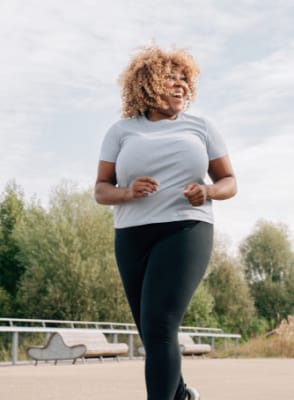A Workout At Work: 5 Office Exercises

Camryn Roberts
Pilates Instructor
- 25 August, 2018
- Exercise
- 4 min read
A Workout At Work: 5 Office Exercises
We know that activity or movement can have extremely positive effects on your mood, cognitive function, immune system, nervous system, and anxiety, as well as providing anti-inflammatory and pain-relieving properties.
We also know that those who are active for about 60 – 75 minutes per day have a reduced risk of health deficits despite sitting for more than 8 hours a day. So, why wouldn’t you move more?
Bookmark or save these very simple movements you can do at your desk. Aim to do them every 2 hours:
1. Glute (pyriformis) stretch
Start with your feet flat on the ground. Place your left ankle on your right knee. Then, gently press into your left knee with the hand and hinge forward from the hips.
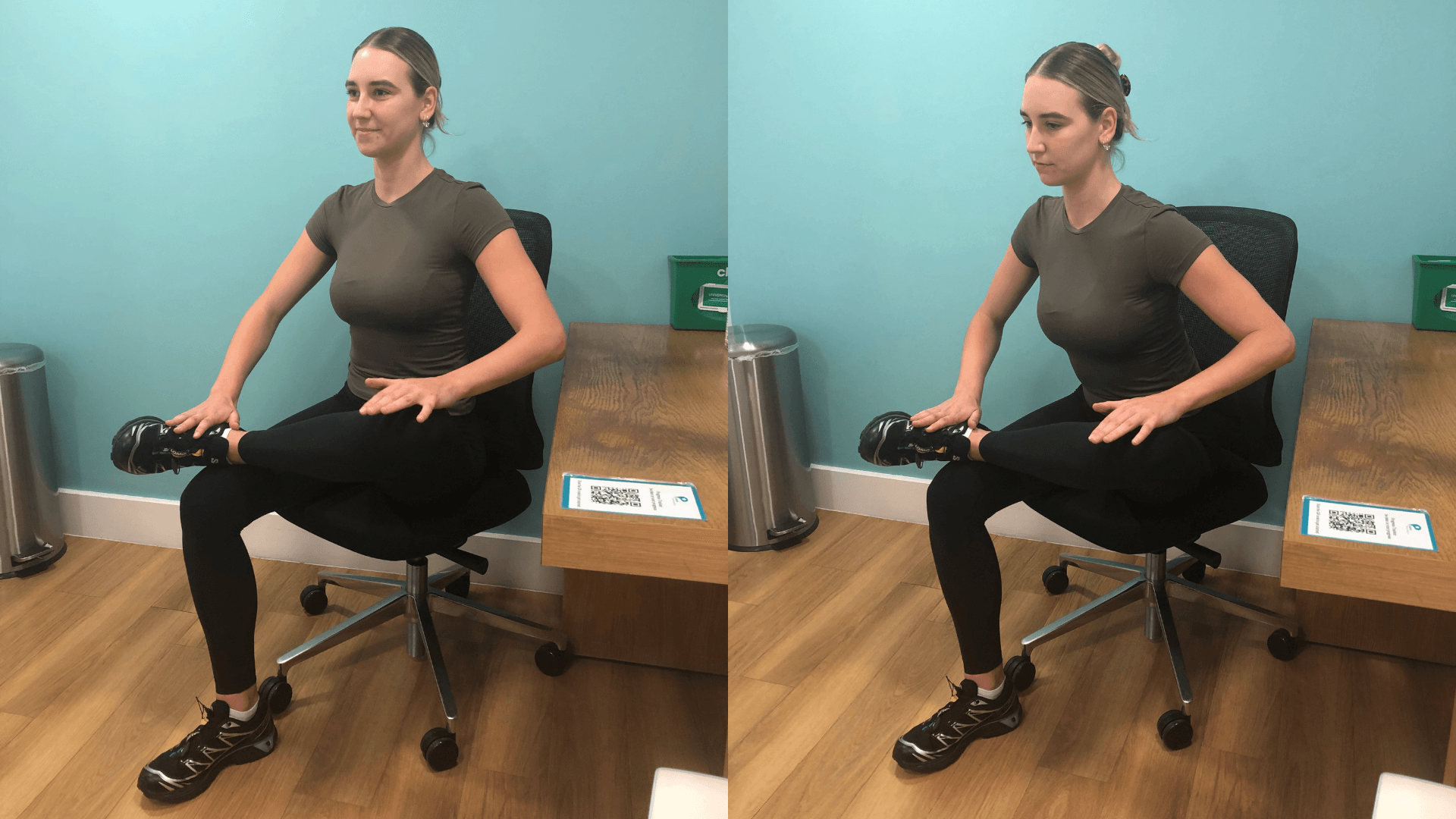
2. Bow and arrow
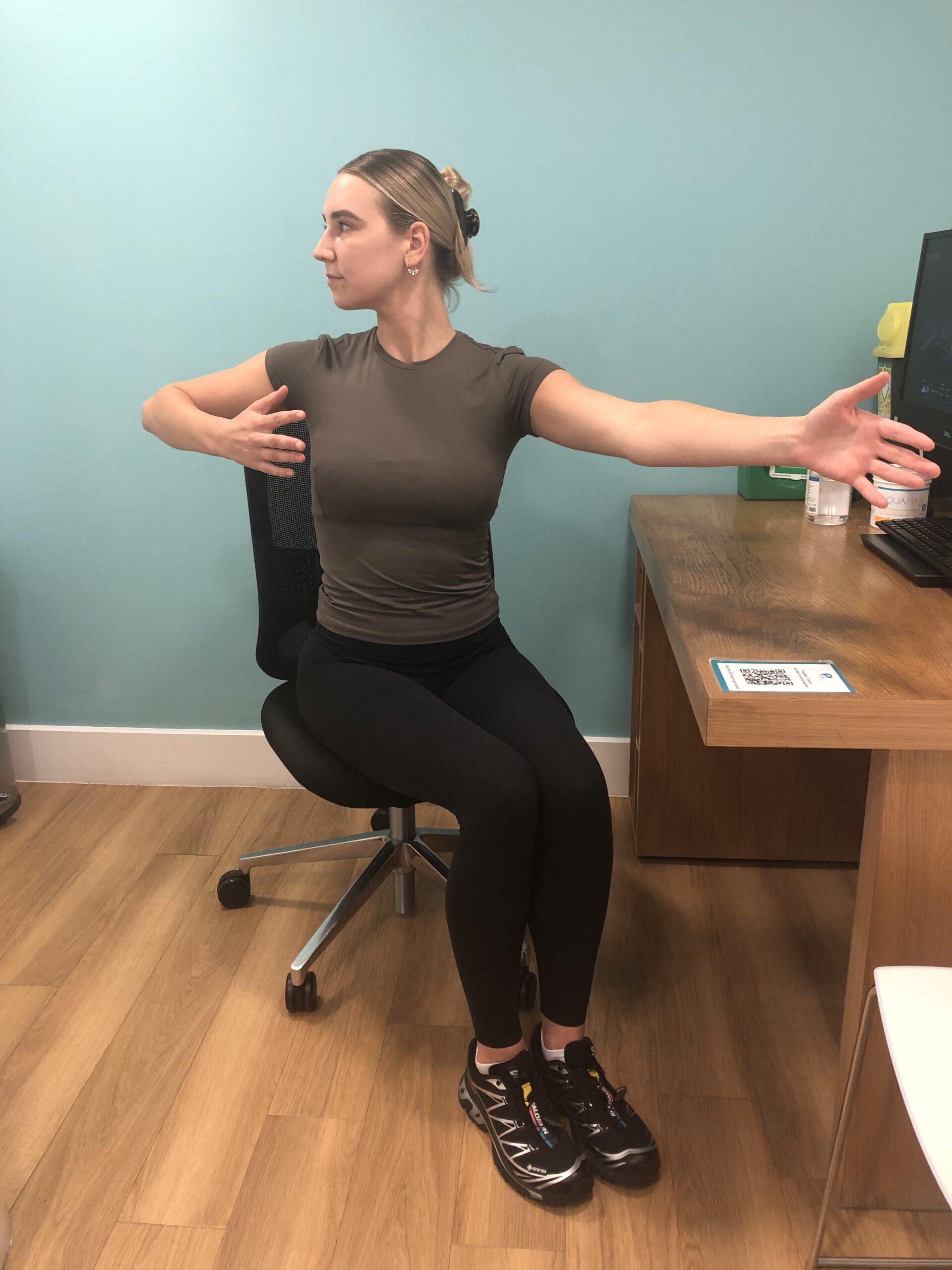
Another good one for back, shoulders, ribs and shoulder blades. With arms in front to start with, rotate the trunk to one side whilst pulling the equivalent arm back like when using bow and arrow. Repeat the other side. Keep the pelvis still. Continue for 60 seconds.
3. A bend to an arch in sitting or standing
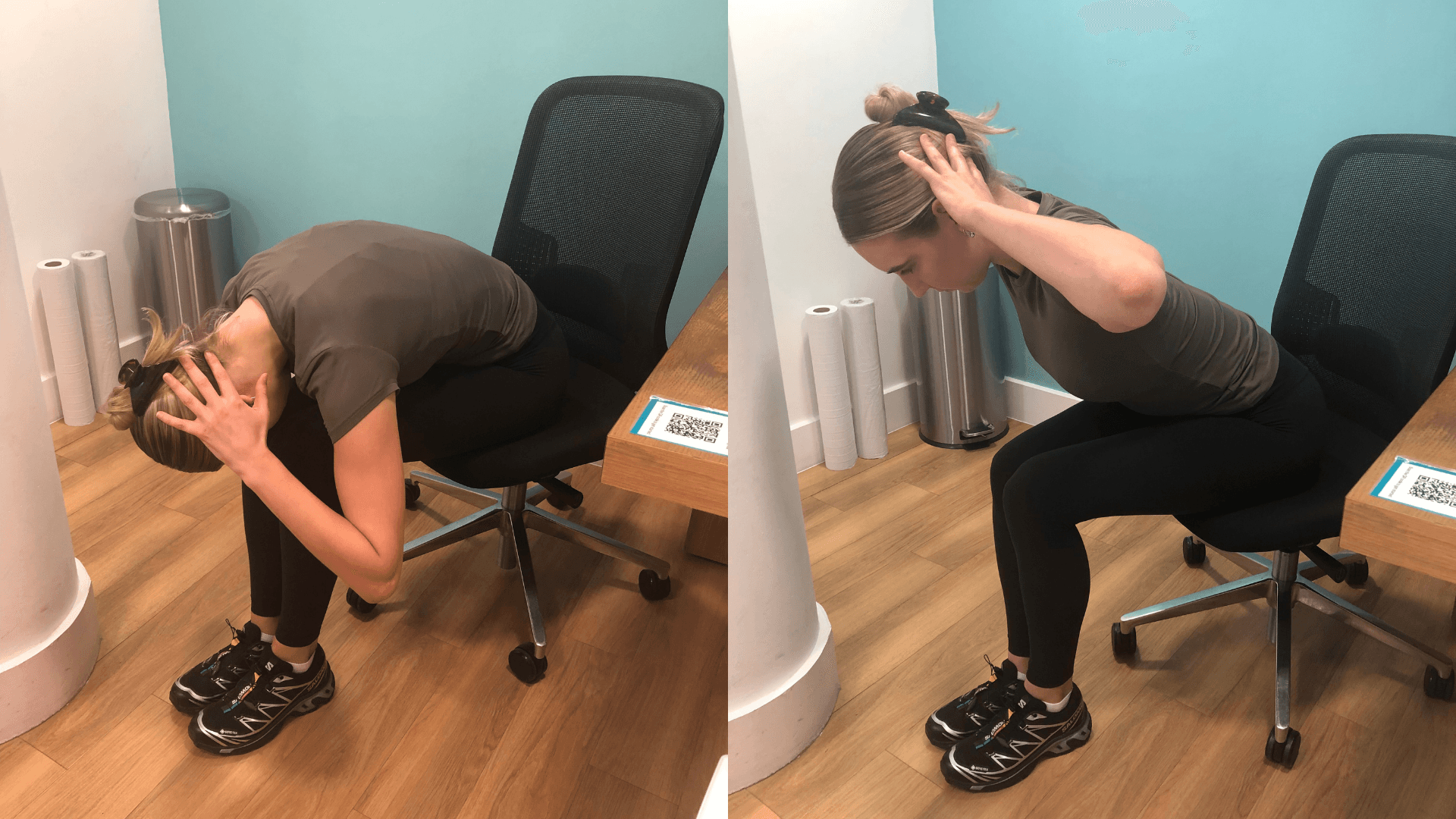
An easy one for your back, hips and neck. Seated in your chair (you can also do it standing), bend forward and touch your toes. Then with hands on head, push your chest forward and arch your mid-back. Continue these continuously for 60 seconds.
4. Hand on head side bend
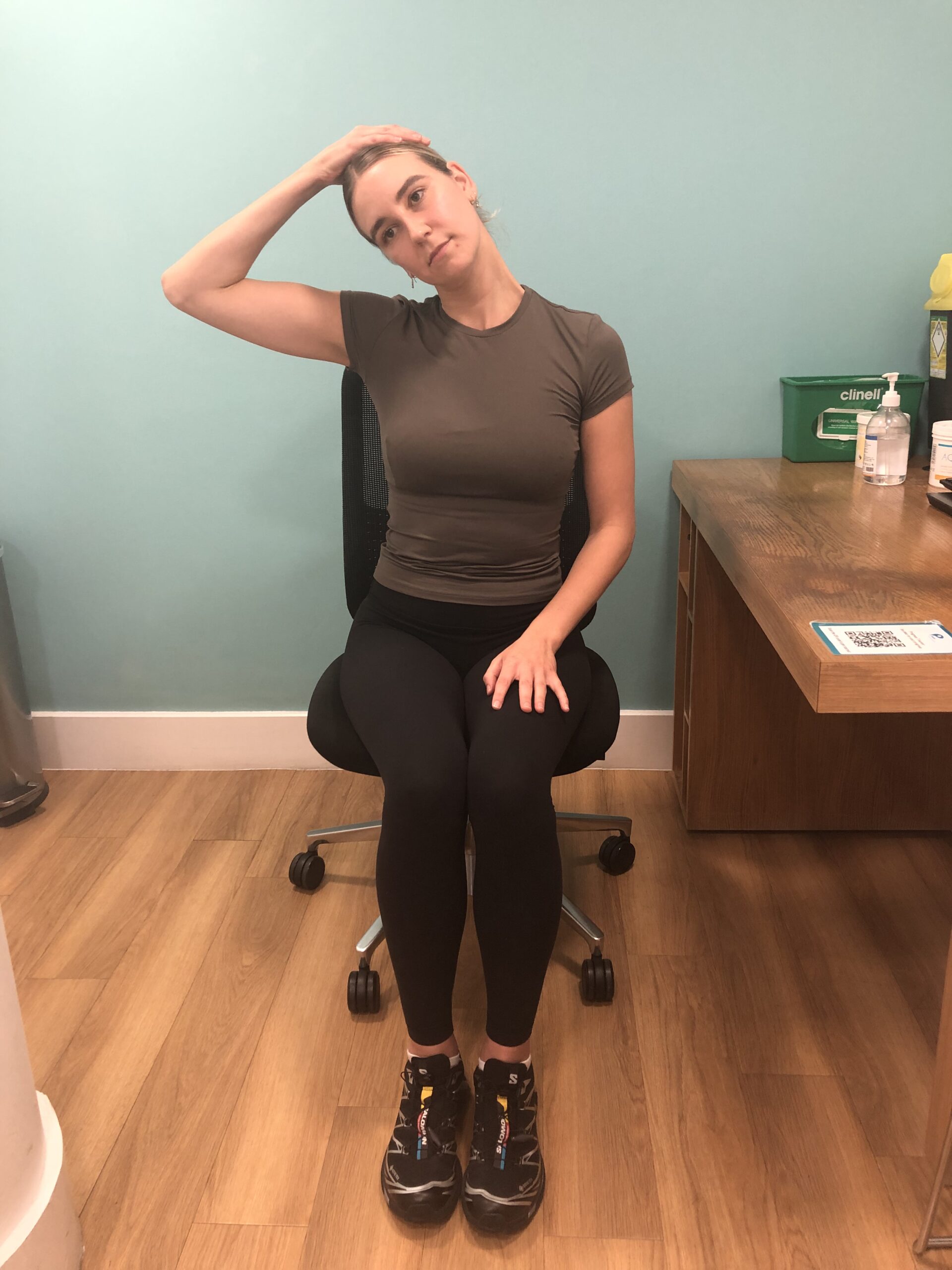
In standing or sitting, place one hand on your head and bend the opposite way. Repeat one way for 60 seconds and the do the same on the other side. A great movement for your back, neck, ribs, and trunk.
5. Chin tuck and point
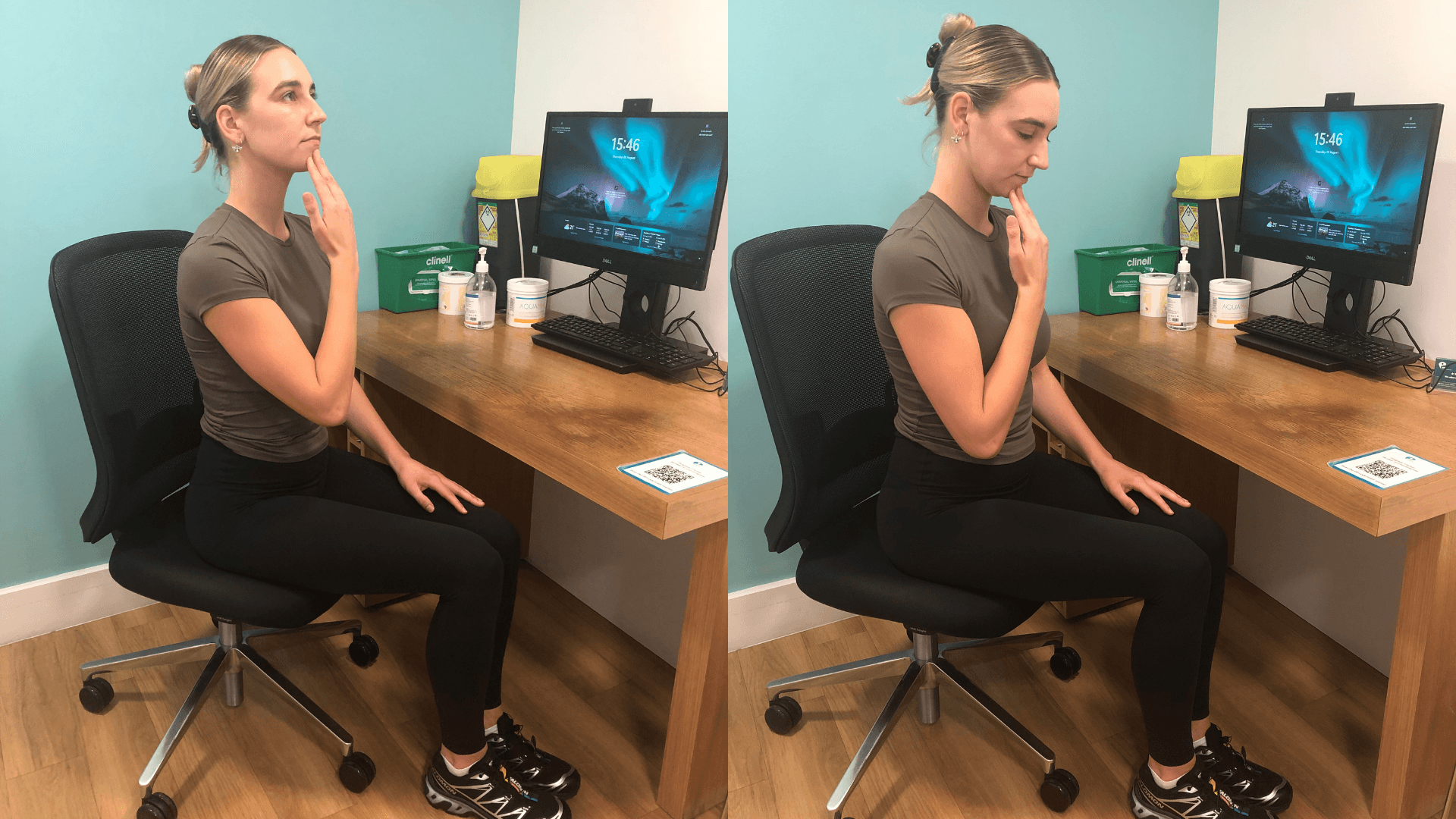
In sitting, stick your chin out and then make a double chin (don’t worry, we’ve all got one!). A great exercise for your neck. Repeat this continuously for 60 seconds.
This circuit will take you 5- 6 minutes to do in total. That’s nothing in the grand scheme of your 8-10 hour workday. So if you repeat every 2 hours, it will take up roughly 20-30 minutes of your work time every day.
It’s common knowledge that long periods of time in sedentary positions is not great for our bodies, however, many of us don’t do anything to rectify this.
Approximately 60% of the patients I treat will have painful symptoms which are in some way linked or aggravated by their office lifestyle. Common pain sites include the neck, back, arms, wrists, and hands.
If you spend too long in one position, you will enter the ‘Danger Zone, ’ where your body will be unable to cope with the amount of strain placed on it. Eventually, you fatigue, which can lead to sensitivity or pain. This can be referred to as ‘overload’.
The ‘Sweet Spot’ when it comes to movement will differ for everyone because our bodies will have different tolerance levels to physical stress. On the whole, however, we would recommend moving out of static positions every 30-60 minutes to stay in the ‘Sweet Spot. ’
Unfortunately, it can be the nature of a lot of people’s jobs. You can, however, put a stop to it. The simple solution is something we all know how to do and are already experts at… movement.
I’m going to give you some simple movement advice you can easily apply to your office. Spread the word within your team and get moving.
In order to prevent overload, there are two strategies to think about: Office Set Up and Regular Movement.
Office Set-Up
Ideally, sit back in your chair with your arms rested on the armrests. Push your chair under your desk and relax in the chair. Let the chair do the work! The screen should be at eye level, and the wrists should be relaxed on the desk.
From a young age, society has reminded us of the importance of posture. We’ve been conditioned to believe that slouching is extremely bad and that keeping a straight, upright sitting posture is much better for you. This isn’t true. In fact, we know from this paper that there is no link between slumping and lower back pain. So, slump all you like.
Remind yourself of the ‘Sweet Spot’ when sitting, however, and remember, it’s not about the position you sit in, it’s about the length of time you sit in it for. So, the best advice is to vary your position regularly.
You may have had an ergonomic assessment at work where your chair height and desk have been measured specifically for you. Ironically, there’s no evidence that ergonomic assessments help to prevent back pain either.
However, it’s still sensible to pester your office to complete one for you (if they haven’t already!) because you can use the chair and your desk to help support some of the strain off your body. Think of your chair as giving you a piggy-back ride! Standing desks can also be helpful just to vary your position.
Ideally, sit back in your chair with your arms rested on the armrest. Push your chair under your desk and relax in the chair. Let the chair do the work. The screen should be at eye level, and the wrists should be relaxed on the desk.
We hope that you find these simple exercises effective and easy to fit into your day. If you do, we are sure that you will see the benefits, even after just a few days.
If you are feeling really achy and stiff – or even in pain – it might be worth speaking to a healthcare professional to get to the root of the issue, make sure nothing more serious is going on, and most importantly create an individualised programme to help you get where you want to be with your physical health.

Advice
Over the last 20+ years our experts have helped more than 100,000 patients, but we don’t stop there. We also like to share our knowledge and insight to help people lead healthier lives, and here you will find our extensive library of advice on a variety of topics to help you do the same.
OUR ADVICE HUBS See all Advice Hubs

